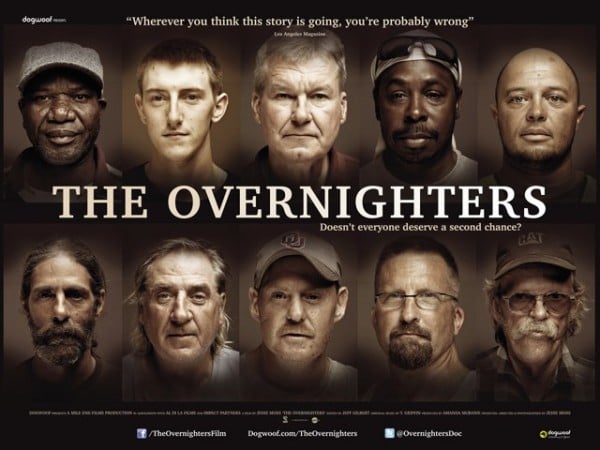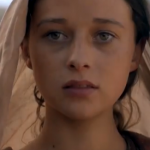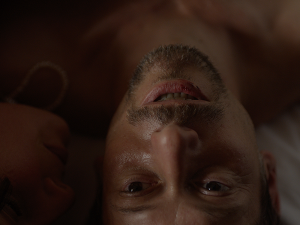
It’s funny how occasionally two or three movies with remarkably similar plotlines show up almost simultaneously. Sometimes film studios no doubt sniff a profitable trend (all those gamely hungry, divergent maze runners), and sometimes it’s pure coincidence, which I’m certain is the case with Gone Girl and The Blue Room, a French film just now hitting American cinemas.
So, let’s run through a checklist, to see how these two movies converge:
– A head scratching tale in which we’re uncertain if one or more murders have occurred? Check.
– Heavy use of flashbacks that intentionally disorient, if not deceive, the viewer? Natch.
– A rather cynical view of marriage and pretty much all human relationships; law enforcement officials who are useless if not malevolent; a surprising twist or two in the final act? Yes, yes, and yes.
Whereas Gone Girl is set in Recessionville, USA, The Blue Room takes place in rural France. Its lead, unlike poor Ben Affleck, is prospering as the head of a farm machinery business. At home, however, Julien Gahyde (Mathieu Amalric) feels far less content with his bland yet dutiful wife Delphine and his elementary school age daughter Suzanne. Julien goes through the motions of a movie night with Delphine and a family weekend at the beach, but his heart is clearly not in it.
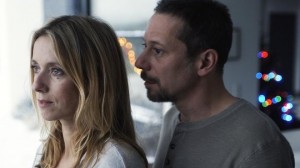
As The Blue Room opens, Julien is nearly one year into a sexually intense affair with Esther, the wife of the village’s chronically ill pharmacist. Julien and Esther have been incautious in hiding their tracks, so their liaison is an open secret in town, raising the question of whether Delphine knows of her husband’s misdeeds.
The film earns its title by beginning in a blue bedroom, at the tail end of a Julien/Esther assignation. It closes in another blue room, this time the courtroom where Julien is being tried. For what exactly, we only slowly learn (and you won’t hear it from me, to keep this review spoiler-free).
The jumps forward and back in time begin almost immediately, as Julien is questioned by a judge and a prison psychologist. In clever style, the words uttered by Julien during his interrogation often overlay the exact same words spoken in flashbacks of his home, work, and extramarital life. We are also served choppy visual editing, with unexpected nude close-ups and scenes that suggest rather than show impending violence. Thus, sound and image meld to give the viewer a sense of unease that mirrors the shock and bewilderment that Julien evidently feels (unless, of course, he’s dissembling for his questioners).
Both lead actresses do fine work here. Lea Drucker tugs at our empathy as Julien’s wife Delphine, who considers herself helpless in her estrangement. Stephanie Cleau’s Esther clearly expresses far more affection for Julien than he does for her, and her attachment convincingly morphs into creepy obsession.
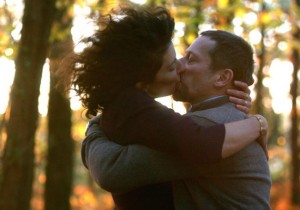
Nonetheless, The Blue Room completely stands or falls on the strength of Mathieu Amalric’s performance. I have long thought that Amalric is one of our greatest living actors, able to convey depths of feeling through a quick glance or mere widening of his eyes. (Kings and Queen and Heartbeat Detector are two of the greatest movies of this past decade, in large part thanks to his compelling presence.) Here again, Amalric succeeds, but not only as an actor, since he also directed and co-wrote the screenplay.
The Blue Room is based on a story by Georges Simenon, the insanely prolific 20th Century French novelist best known for his Inspector Maigret detective stories. The movie version stays gratifyingly faithful to Simenon’s technique of excavating the sinister recesses of human psychology in a concise manner.
And this is where The Blue Room surpasses Gone Girl. Much as I admire David Fincher’s style, the latter film felt bloated in its 2.5 hour duration, while The Blue Room is leaner by half. Additionally, Gone Girl’s perverse characters and narrative convolutions ultimately broke the chains of plausibility, whereas Simenon’s and Amalric’s work might strain these cords but stays credible.

Dark journeys such as these two films leave me more unsettled than entertained, so Amalric’s movie is a work that I esteem more than I enjoy. However, if this genre gives you pleasure, then The Blue Room is worth a visit.
3 out of 5 stars
(Parents’ guide: The Blue Room is justifiably rated R. Its themes and graphic sexuality make it suitable for mature audiences only.)



